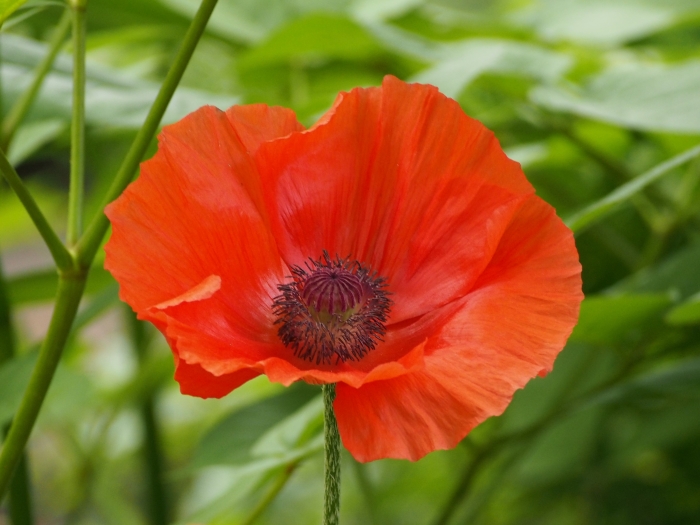Oriental Poppy
(Papaver orientale)
Oriental Poppy (Papaver orientale)
/
/

Agnieszka Kwiecień, Nova
CC BY-SA 4.0






























































































Estimated Native Range
Summary
Oriental Poppy is valued for its striking flowers and ability to adapt to summer drought conditions. It is often used in border plantings, rock gardens, and cottage gardens. The plant prefers well-drained soil and can tolerate a range of soil types, from sandy to loamy. It is best to avoid over-watering and transplanting, as the plant has a taproot system that does not like to be disturbed. Oriental Poppies are relatively low maintenance, requiring only occasional watering once established. Deadheading after the first bloom may encourage a second flowering. In winter, a layer of mulch can help protect the crown of the plant. Potential problems include root rot if over-watered and susceptibility to pests such as aphids.CC BY-SA 4.0
Plant Description
- Plant Type: Herb
- Height: 1-1.5 feet
- Width: 1-1.5 feet
- Growth Rate: Moderate
- Flower Color: Orange, Red
- Flowering Season: Summer
- Leaf Retention: Deciduous
Growth Requirements
- Sun: Full Sun
- Water: Medium
- Drainage: Slow, Medium
Common Uses
Bank Stabilization, Bee Garden, Bird Garden, Border Plant, Butterfly Garden, Deer Resistant, Drought Tolerant, Fire Resistant, Fragrant, Hummingbird Garden, Potted Plant, Rabbit Resistant, Rock Garden, Showy Flowers
Natural Habitat
Grasslands, rocky slopes, and subalpine regions in the Transcaucasus, northeastern Turkey, and northern Iran
Other Names
Common Names: Orientalsk Valmue, Orientalischer Mohn, Idänunikko, Pavot D’Orient, Oosterse Klaproos, Reuzenklaproos, Eldvallmo, Orientalisk Vallmo, Praktvallmo, Orientvallmo
Scientific Names: , Papaver orientale, Papaver pollakii, Calomecon orientale, Papaver dzeghamicum, Papaver grandiflorum, Papaver spectabile,
GBIF Accepted Name: Papaver orientale L.